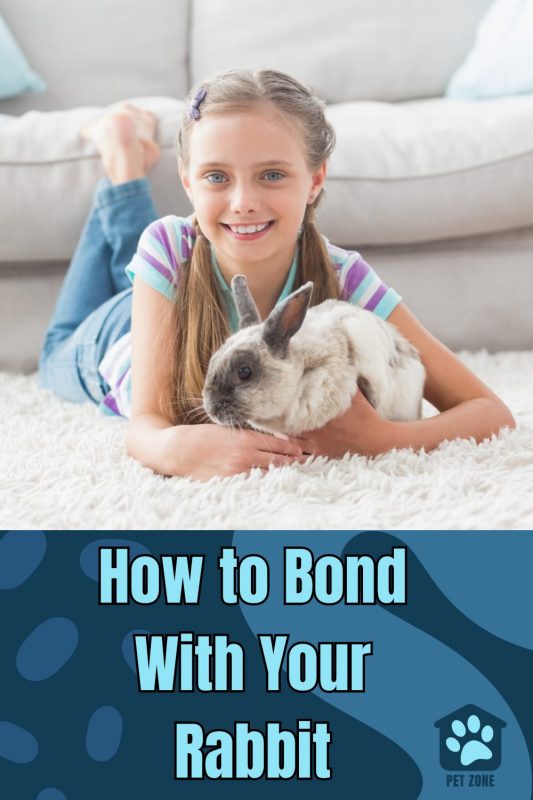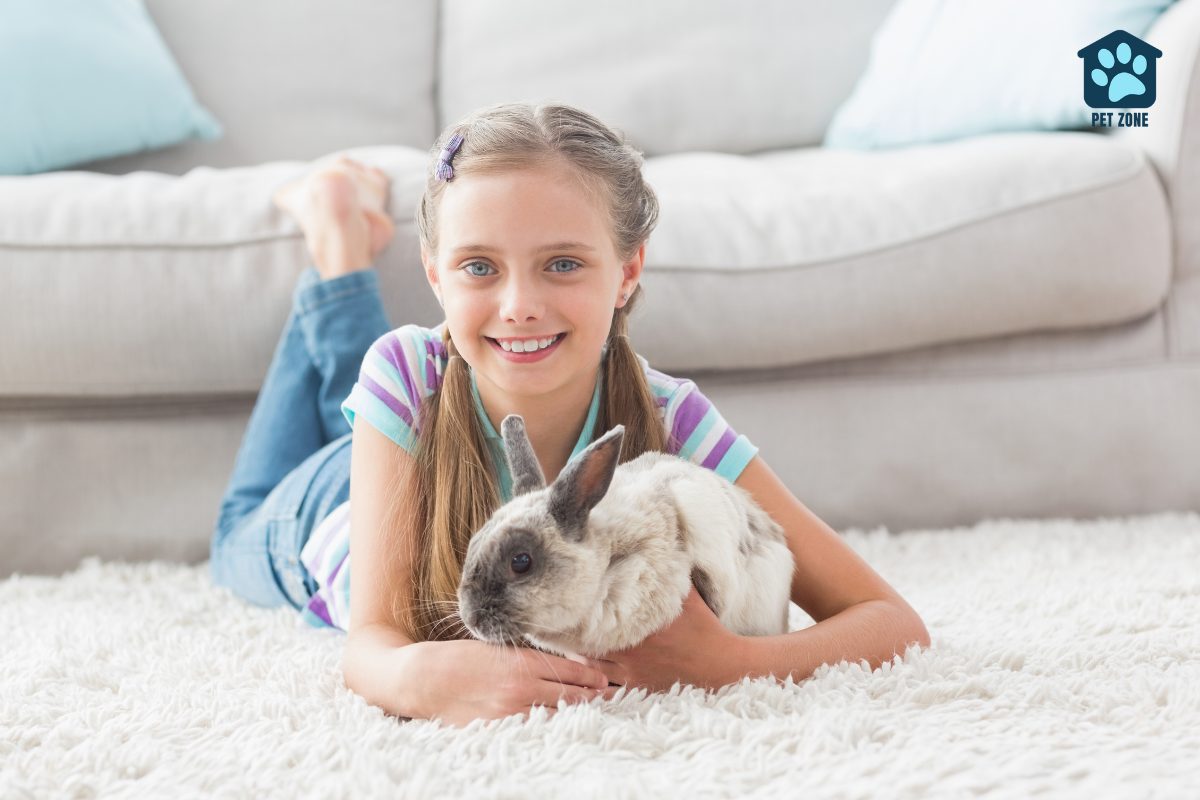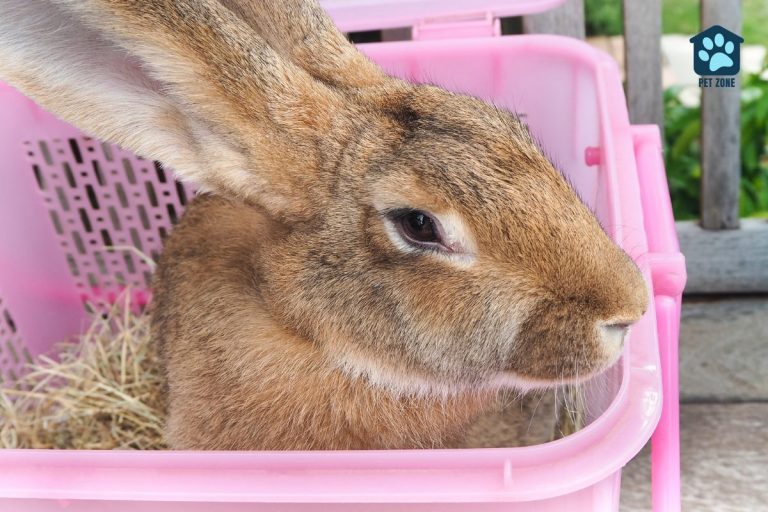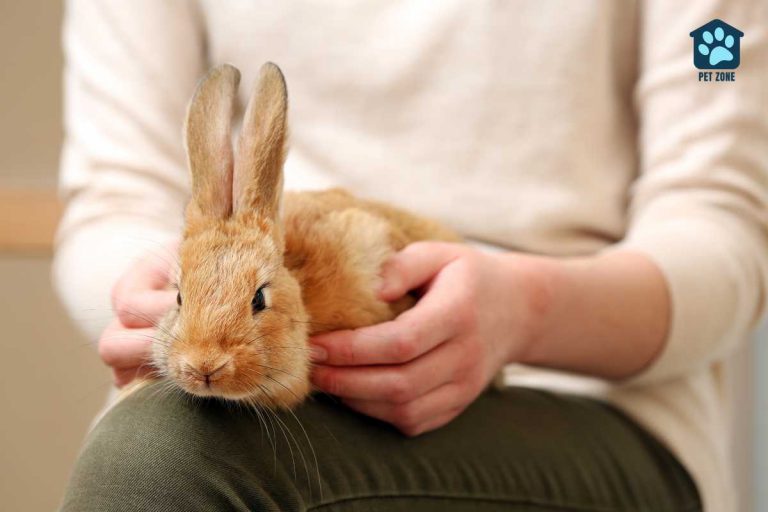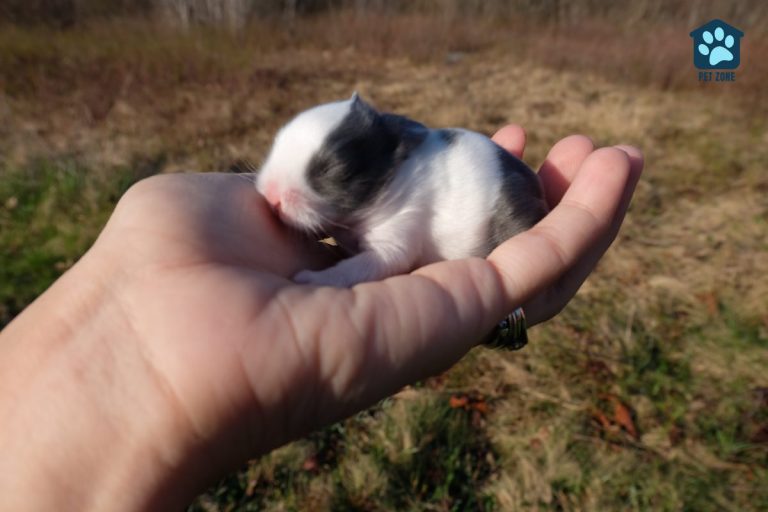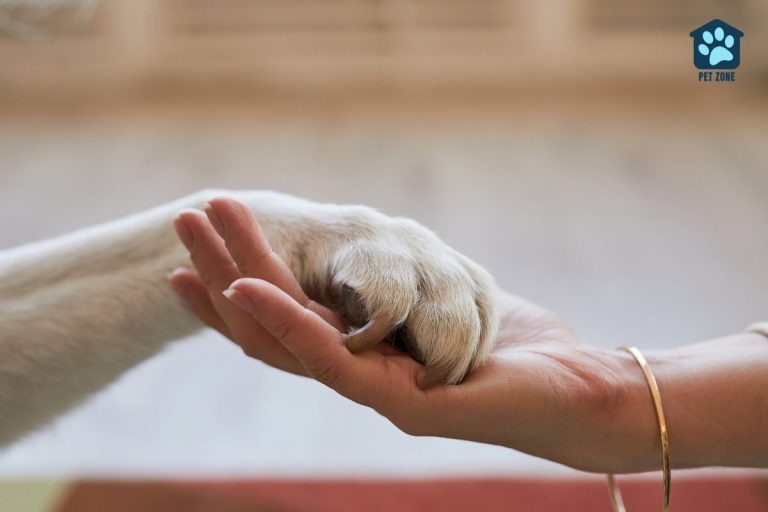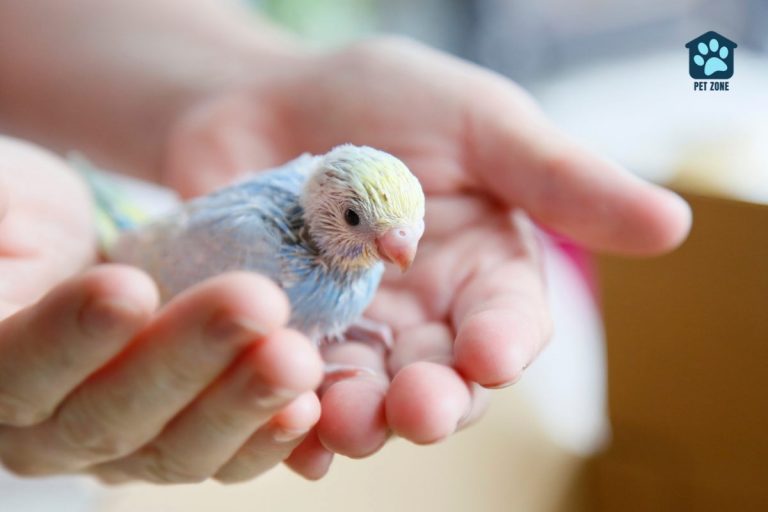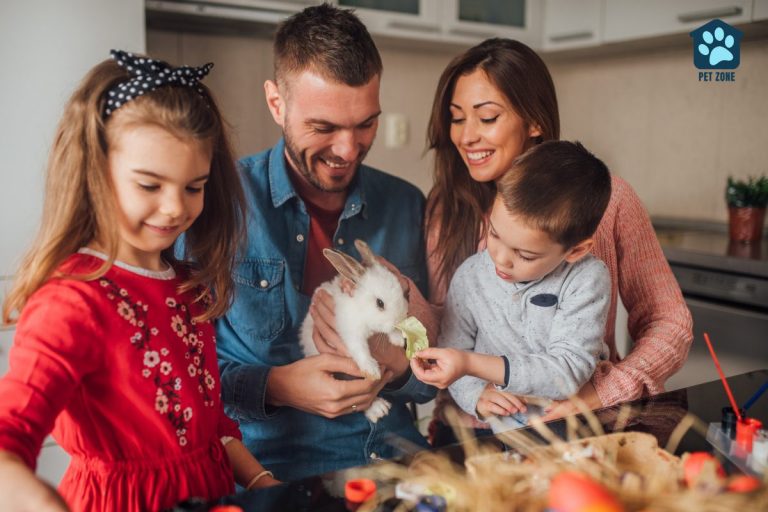Estimated reading time: 9 minutes
Bringing a rabbit into your home is like adding a bundle of energy and curiosity to your life. But if you’re staring at your new furry friend and wondering why they seem more interested in their corner than cuddles, you’re not alone.
Building a bond with a bunny is different than with cats or dogs—it takes patience, understanding, and respecting their unique needs as prey animals.
Did you know that creating comforting routines can make all the difference for your pet rabbit? From daily playtime to snack schedules, consistency helps them feel safe in their environment—and closer to you.
Our guide will show you simple steps to earn trust and develop a loving connection with your hoppy companion. Get ready for those heart-melting moments when your rabbit chooses to snuggle up close!
Key Takeaways
- Spend quiet time on the floor with your rabbit to make them feel safe and show you’re part of their world.
- Keep a regular schedule for meals, grooming, and playtime to help your rabbit trust you.
- Use treats and training to reward good behavior and build a closer bond with your bunny.
- Give rabbits toys and their own hideaway space so they can have fun and feel secure.
- Watch for signs like grooming, lying down next to you, or binkies as clues that your bond is growing strong.
Understanding Rabbit Behavior
To truly bond with your rabbit, it’s essential to grasp their unique language of hops and twitches. Recognizing these subtle cues allows you to respect their space and build trust on their terms, laying the groundwork for a deeper connection.
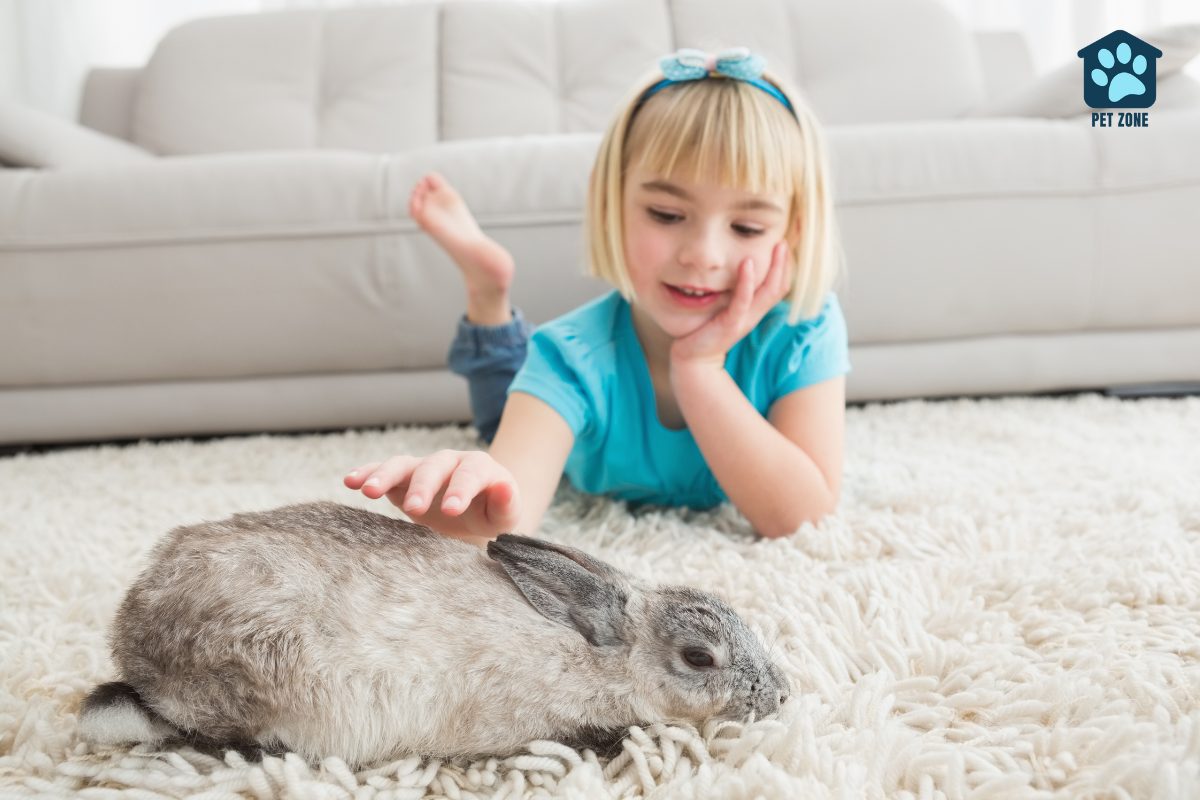
Recognizing Rabbit Body Language
Rabbits speak volumes with their body language.
- Look for signs like ears back or a thumping foot – these show your bunny is scared or upset.
- If they grind their teeth softly, it’s a sign of contentment, like purring in cats.
- Your rabbit might also nudge you gently with its nose to ask for attention or affection.
- A relaxed rabbit will have loose ear positions and may lay stretched out comfortably.
- Observe if your rabbit comes close and sniffs you; this means they’re curious about you!
- Licking is very special – it’s how rabbits show love and trust, so if your bunny licks you, feel proud!
- They might even circle your feet when they’re happy.
Remember, don’t force interaction; let the rabbit choose to come to you as this helps them feel safe and builds trust on their terms.
Respecting Your Rabbit’s Boundaries
Your rabbit needs its own space, just like you do. Learn to see the signs that your bunny wants to be alone.
If it moves away or turns its back, it’s saying “I need some time by myself.”
Don’t chase after your pet; this could scare them since they are prey animals and might think you’re a predator. Instead, wait for them to come back on their terms. It helps make sure they feel safe around you.
Give your rabbit a hideaway in their cage — a small box or shelter where they can escape when things get too busy or loud. This is important because rabbits are sensitive to noise and changes in their environment.
When they have a cozy spot to retreat to, they’ll trust that you respect their need for comfort and security. Building this trust is key to a strong bond with your new bunny.
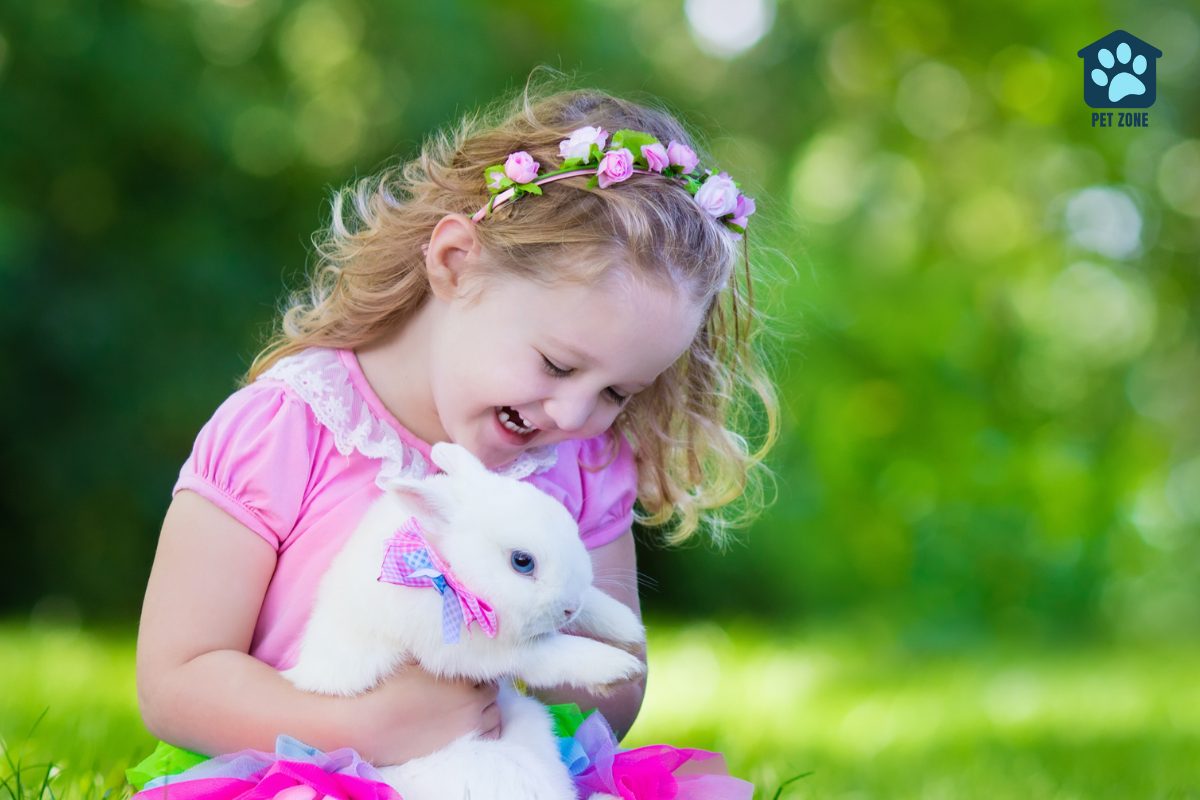
Effective Ways to Bond with Your Rabbit
Discovering the key to a strong connection with your rabbit lies in engagement strategies that cater to their unique behaviors as prey animals.
By immersing yourself within their world and respecting their pace, you pave the way for a friendship built on trust and mutual comfort—let’s explore how to cultivate this special bond.
Sitting or Laying with Your Rabbit
Get down on the floor to sit or lay with your new rabbit. This makes you less scary and helps your rabbit feel safe.
Stay still and let your bunny come to check you out. They may hop around or even take a nap next to you!
Keep treats on hand, so when they approach, you can gently offer one.
Lie side by side with your rabbit and just spend time together quietly. Having a friend nearby is calming for rabbits since they’re prey animals.
Over time, lying together tells your rabbit that you’re part of their group – it’s how bunnies show love and trust in each other!
Letting Your Rabbit Approach You
Sit calmly and quietly on the floor to let your rabbit come to you. This shows you respect their space.
Rabbits are naturally curious, so give them time to sniff around and hop over when they’re ready. By staying still, you become less scary and more interesting.
Talk softly while waiting for your bunny. Your soothing voice will help your pet feel safe. Keep your movements slow and gentle when your rabbit checks you out.
This patience builds trust between you two, helping your rabbit know it’s okay to be close.
Maintaining a Consistent Daily Routine
Establish a regular schedule for your rabbit’s meals, playtime, and quiet times. Rabbits are creatures of habit and thrive on predictability. Feeding them at the same times each day makes them feel secure and forms trust.
Make sure their diet is rich in fiber with plenty of hay, fresh veggies, and a few pellets. This not only keeps them healthy but also shows you care.
Include grooming in your daily routine to keep their fur neat and clean. Brushing can be a soothing activity that helps you bond with your bunny. Offer small treats during these moments to create positive associations.
Stick to this pattern every day; it reassures your rabbit and strengthens the bond between you two.
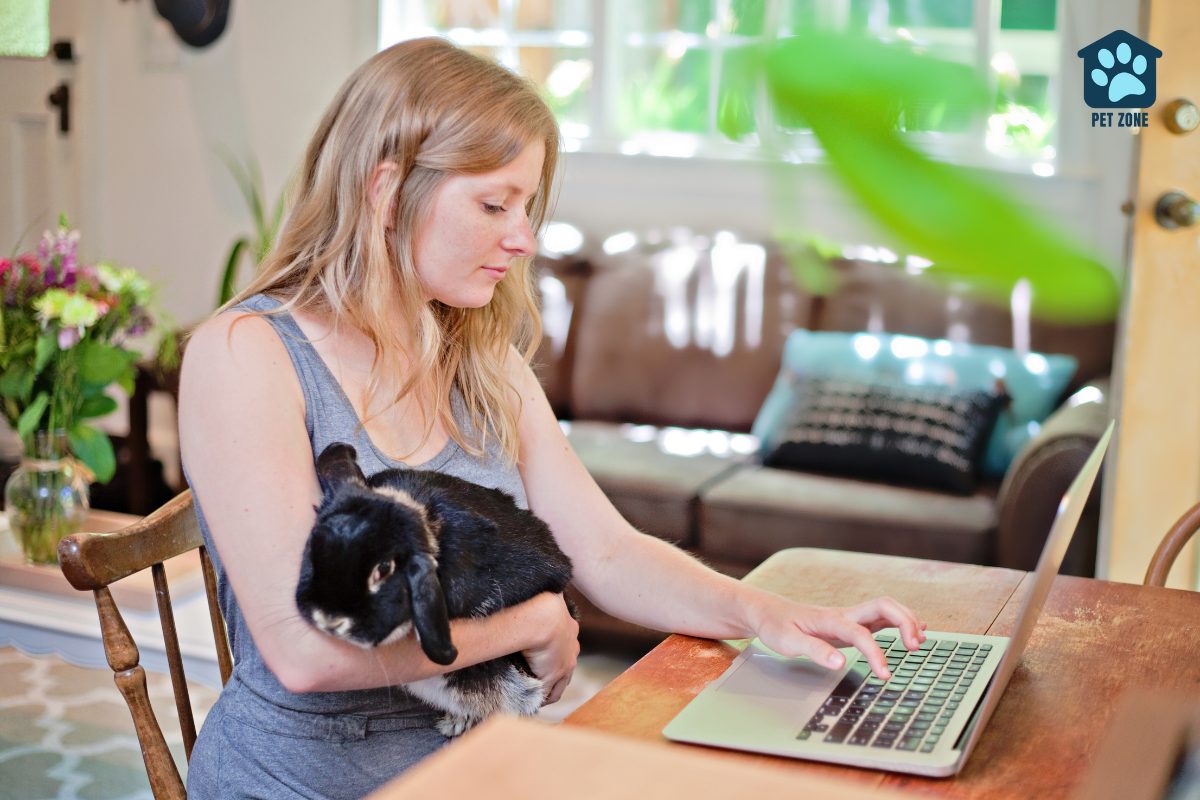
Training Your Rabbit
Training your rabbit is key to managing their natural behaviors. It helps them feel happy and shows you respect their needs.
Start by teaching simple commands like ‘come’ or ‘stay’. Use small pieces of treats to reward your bunny when they do something right. This makes learning fun for them.
Be gentle with your rabbit during training sessions. If they startle or seem scared, give them space and try again later. Patience is important as every rabbit learns at its own pace.
Keep sessions short so they don’t get bored or overwhelmed. As trust grows, your rabbit may even learn tricks like jumping through hoops!
Offering Treats Responsibly
Give your rabbit treats to reward brave behavior. This shows them it’s good to be curious and friendly towards you.
Treats work well when you’re trying to train your rabbit or just make them happy. Always use small bits of healthy snacks, like carrots or leafy greens.
Hand-feed your bunny for a closer bond. Sit calmly and let them take food from your hand when they feel safe. This builds trust but needs patience.
Be sure not to overdo it with treats, as too many can be bad for their health. Keep most of their diet as hay, fresh veggies, and proper rabbit food.
Providing Toys and Hideaways
Rabbits need fun activities just like cats and dogs. Toys keep them busy and let them do things they naturally enjoy, like digging and chewing.
You can use simple items, such as cardboard boxes for a playhouse or stacking cups for tossing. These toys help your rabbit to feel comfortable and secure in their environment.
Hideaways are essential to make rabbits feel safe from predators, even when indoors. A tunnel offers a cozy spot where rabbits can hide, relax, or take a quick nap away from the world.
By swapping out bedding or toys between buns, you also encourage them to get used to each other’s smell which is great if you have more than one rabbit.
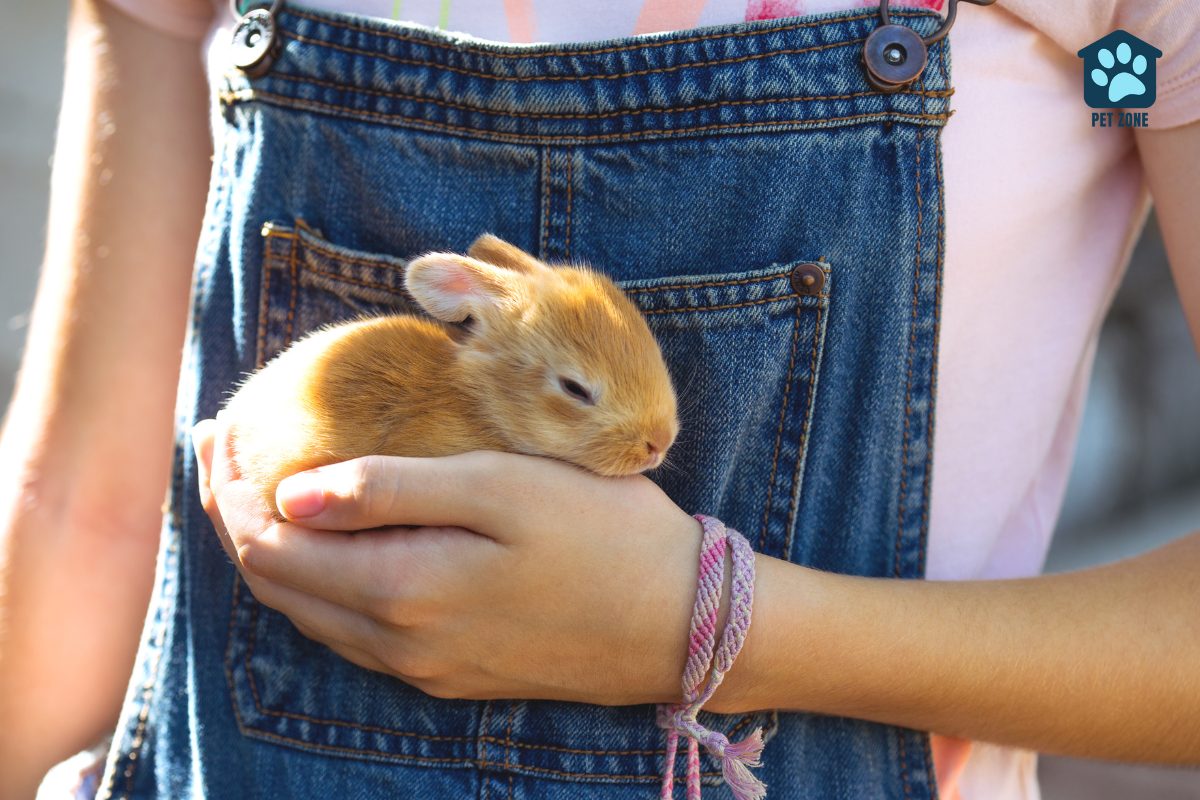
Signs of Successful Bonding
Your rabbit may start grooming itself or you, showing they’re comfy and happy around you. This is a big step for a small pet like a rabbit.
If they lie down beside you or hop over without fear, that’s another good sign. It means trust is growing every time you hang out together.
When your rabbit starts to nuzzle into your hand or sniff at you often, it’s their way of saying “You’re my friend.”
Another big moment is when rabbits do binkies—that joyful jump in the air—it shows they’re super excited and feel safe with you.
Every gentle head bump and relaxed flop means your bond is getting stronger!
Frequently Asked Questions
Understanding that rabbits are prey animals helps you know why they get scared easily by loud noises and new places. This knowledge lets pet owners create a safe, quiet place for their rabbits, making bonding easier.
To help your rabbit feel comfortable, spend time sitting on the floor at your rabbit’s level. This shows you’re not a threat. Give them space and a hiding spot in their exercise pen where they can watch you without fear.
Playing gently with your rabbit will strengthen your relationship. Offer toys, let them explore an area safely while supervised, or sit quietly and wait for them to come to you – this could lead to lots of affectionate licking from your bunny!
Yes! Rabbits usually enjoy being petted softly on their forehead or back but remember each one is different. Practice picking up your rabbit only if needed since many don’t like it; instead, treat your social animal with gentle strokes while lying on the ground beside them.
Getting your rabbit spayed or neutered often makes them happier and healthier which helps build trust between you two because unneutered rabbits may be more aggressive due to hormones.
Treats are great tools! Use bits of food they love during playtime or training – think small pieces of apple or carrot – motivate curiosity about you without forcing interaction too quickly as rabbits need time to get used to your presence.
As an Amazon Associate I earn from qualifying purchases.
